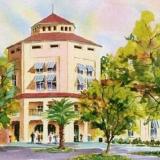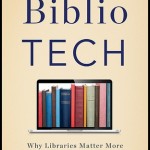 In the ALA Virtual Conference, a presentation that can have an immediate impact for any library was “Download This! How One Library Embraced Its Downloadable Future”. But it’s not about the downloadable future, it’s about the downloadable present!
In the ALA Virtual Conference, a presentation that can have an immediate impact for any library was “Download This! How One Library Embraced Its Downloadable Future”. But it’s not about the downloadable future, it’s about the downloadable present!
 For those who missed the ALA Virtual Conference, the Public Library of Cincinnati and Hamilton County gave an excellent presentation about how they took the proverbial bull by its proverbial horns and pushed downloadable ebooks and eaudiobooks from backburner to front and center of their website, their service and their collection development. There was definitely a note of chagrin in their confession that just a couple of years ago, the best place for a person to learn about ebooks in the Cincinnati area was the local Barnes & Noble, not the library. (Full disclosure, my very first library job was as a page for PLC&HC many moons ago)
For those who missed the ALA Virtual Conference, the Public Library of Cincinnati and Hamilton County gave an excellent presentation about how they took the proverbial bull by its proverbial horns and pushed downloadable ebooks and eaudiobooks from backburner to front and center of their website, their service and their collection development. There was definitely a note of chagrin in their confession that just a couple of years ago, the best place for a person to learn about ebooks in the Cincinnati area was the local Barnes & Noble, not the library. (Full disclosure, my very first library job was as a page for PLC&HC many moons ago)
Although they may be a large library with a good-sized budget, the process that Sandy Bolek and Holbrook Sample outlined was a process that any library could tailor to their own circumstances. And every library has circumstances.
The current statistics according to the Pew Research Center show that 12% of Americans own an eReader of some type. 8% of Americans own a tablet device, so an iPad or Android tablet. On the one hand, some of that ownership definitely overlaps (yours truly has both) but on the other hand, those statistics are a month old. They’ve undoubtedly changed–by rising. EReader ownership has tripled since the same time last year, and tablet ownership has doubled. Book sales are down in every category, except digital, which is up by 150+% according to the American Association of Publishers.
The July 25, 2011 issue of Shelf Awareness reports that, “Some 21% of reading group members are now reading all or most of their selections on e-readers, up from 11% in 2009…” Reading groups are valued members of every library’s community. And one member out of five is reading their book on a reader.
If more than 1 person in 10 has an ereader, and 1 person in 5 in a reading group is reading their selections on an ereader, then, are downloadables the future, or are they now? What can your library do if it’s now?
Cincinnati’s plan is straightforward. Although this list is in order, it is also a continuous loop. Once you start, you don’t ever get to stop.
1.Collection to meet demand and holds
2.Staff training to be able to assist patrons
3.Website promotion to make downloads prominent and increase ease of use, FAQs, etc.
4.Marketing, marketing, marketing
Straightforward doesn’t mean easy. They spend 5% of their collection development funds on downloadables, and circulation has risen dramatically as a result. This is true for collection development in general. New material, popular material, brings new users. Older material, a collection that is not refreshed, does not have what people want, or doesn’t have anything in, frustrates people and turns them away.
Patrons need to know that the library doesn’t just have ebooks, but can help. Although the user experience is getting better as the products mature, it can be frustrating. If we want people to come to us, we have to be willing to help them, and to listen to them. Barnes & Noble will help them if we don’t.
We need to tell patrons that we have what they are looking for. People don’t assume that we have ebooks. Some people think we all still have white hair tucked up in a bun, and we know that’s not true. Why would they think we have ebooks unless we tell them? Barnes & Noble and Amazon put their Nook and their Kindle front and center on their websites.
 At the Alachua County Library District, I went through many of the same steps that Cincinnati did. I also looked at the collection as it was, and the outside market, and realized that downloadables could be really huge for the library if they were focused on in the right way. Collection development for downloadables is a different animal in some ways than more traditional library formats, but the challenge is to work it into the library’s flow. Alachua also saw a jump in downloadable circulation of 300% from 2009 to 2010, and 2011 is on track for a similar increase. Giving the downloadable collection a prominent place on the library’s website will reap benefits. Making sure there is high-quality, constantly refreshed content when patrons go to your downloadables will bring them back time and time again.
At the Alachua County Library District, I went through many of the same steps that Cincinnati did. I also looked at the collection as it was, and the outside market, and realized that downloadables could be really huge for the library if they were focused on in the right way. Collection development for downloadables is a different animal in some ways than more traditional library formats, but the challenge is to work it into the library’s flow. Alachua also saw a jump in downloadable circulation of 300% from 2009 to 2010, and 2011 is on track for a similar increase. Giving the downloadable collection a prominent place on the library’s website will reap benefits. Making sure there is high-quality, constantly refreshed content when patrons go to your downloadables will bring them back time and time again.







